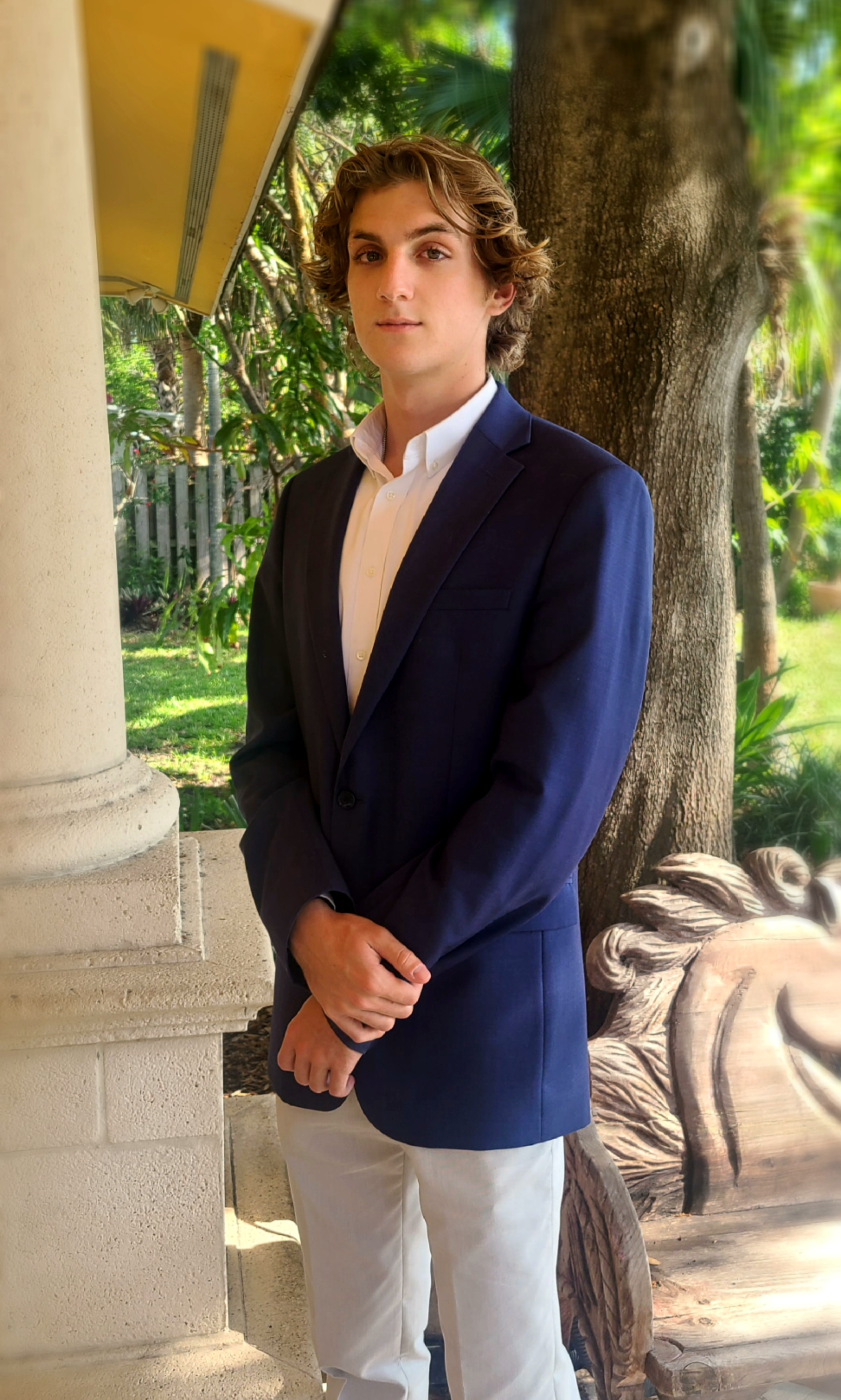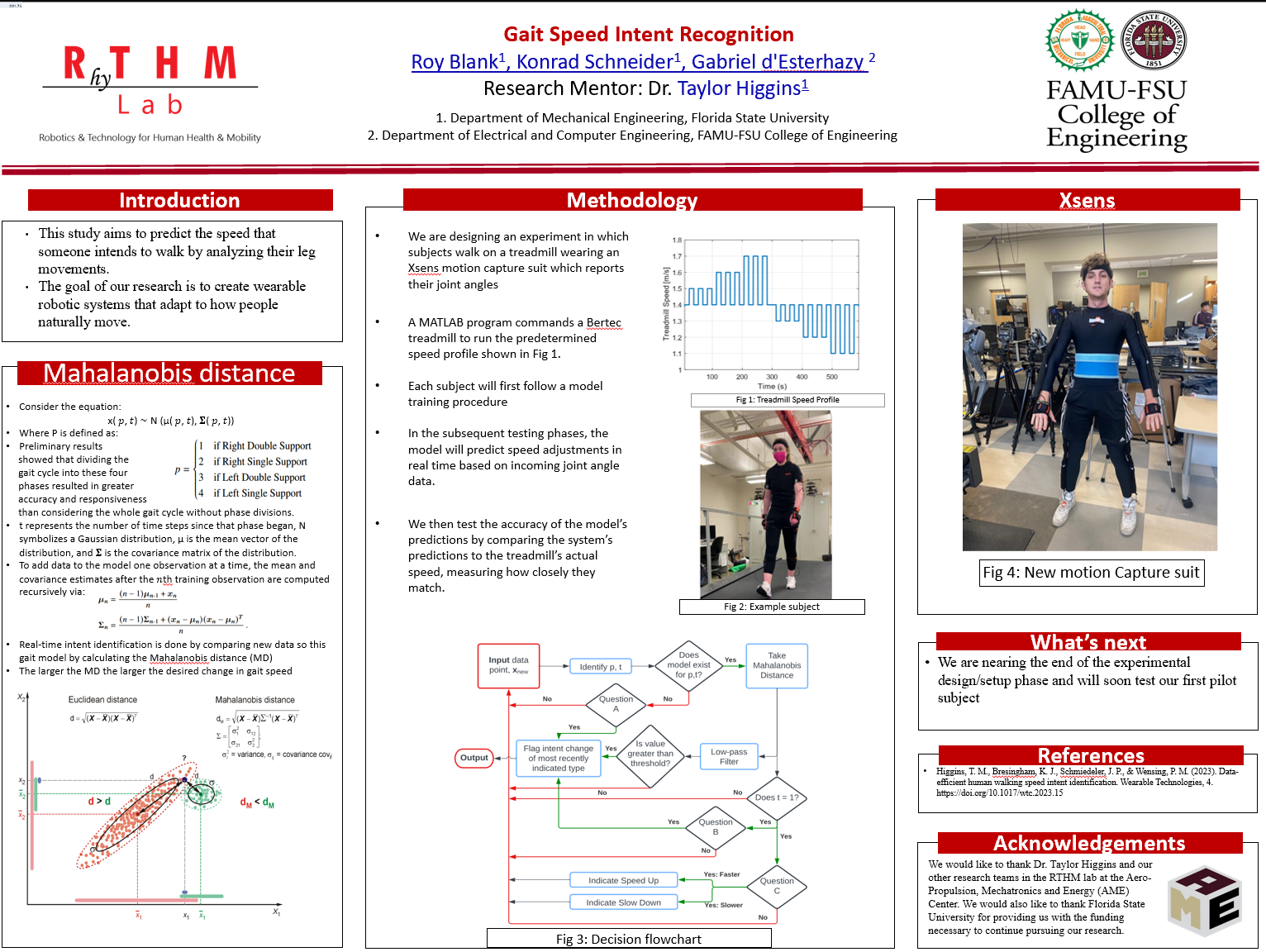Research Symposium
25th annual Undergraduate Research Symposium, April 1, 2025
Konrad Schneider Poster Session 3: 1:45 pm - 2:45 pm/ Poster #150

BIO
My name is Konrad Schneider, from Ft. Lauderdale, Florida. I am a Mechanical Engineering student specializing in Human Robot-Interaction and predictive modeling. Eager to design adaptive technologies that bridge human movement with smart systems,
improving accessibility in rehabilitation and everyday life.
Gait Speed Intent Recognition
Authors: Konrad Schneider, Dr. Taylor HigginsStudent Major: Mechanical Engineering
Mentor: Dr. Taylor Higgins
Mentor's Department: Department of Mechanical Engineering Mentor's College: FAMU-FSU College of Engineering Co-Presenters: Roy Blank, Gabriel d'Esterhazy
Abstract
This study explores a new way to predict a persons movement intention by analyzing joint angles. Previous work on gait speed intent recognition has been able to identify discrete desired gait speed changes such as the desire to speed up, slow down, or make no change by monitoring only the person gait kinematics. In this work, we plan to use a similar technique to identify not only the desire to change speeds but also the amplitude of the desired speed change.The proposed method involves first training two subject-specific walking models. One model represents the kinematics for constant-speed walking while the other determines the relationship between Mahalanobis distance value and the size of the desired speed change. In the testing phase, the model predicts speed adjustments in real time based on incoming joint angle data. We test accuracy by comparing the system’s predictions to the treadmill’s actual speed, measuring how closely they match. The goal is to create a personalized, responsive system that adapts to how people naturally move, which could help improve exoskeletons for rehab, sports training, or everyday fitness. The study’s dual-phase design (training/testing) ensures generalization across individuals, offering a framework for personalized human-robot interaction.
Keywords: Engineering, Motion Capture, Intent Recognition, Human Robot Interaction, Human Subject Testing


